‘The American lawn feels irresponsible’: the LA homes ditching grass for drought-friendly gardens | Los Angeles
A lush green lawn has long been a symbol of the perfect American home. But as a prolonged drought reshapes life in California, many residents are rethinking what a beautiful yard should look like.
In Los Angeles, which imposed sweeping restrictions on outdoor water use this year, thirsty lawns are out – and California native plants are in. From mansions in Brentwood to old family homes in Koreatown to neighborhoods in South LA, Angelenos are installing climate-friendly yards full of California buckwheat, toyon, sage, and succulents, and building in garden features to help conserve and retain the state’s limited rainwater.
The choice to conserve may be contagious. Starting this June, more than a thousand southern California residents a month made plans to replace their lawns with more drought-friendly landscapes, according to data from the Metropolitan Water District of Southern California.
“People wanting to have the ‘American lawn’ – it feels very irresponsible to do in a place where it’s not the natural landscape,” said Danielle Koplinka-Loehr, who grew up on the east coast and removed her Los Angeles lawn in 2020 as part of a city program.
William Francis Deverell, an environmental historian at the University of Southern California, says there’s a reason grass came to dominate what is naturally a much drier landscape. Lush, rectangular lawns played an important role in the marketing of southern California real estate to potential homeowners in the midwest, serving as a symbol of a “prosperous, rational, highly-ordered landscape … a way to harness the faith that the Anglo-American period had conquered nature”, Deverell explained.
The rejection of grass is also an ideological shift, towards an acceptance that “nature is its own decision-maker” and that “we had better learn to live a little differently with finite resources of water”, Deverell said.
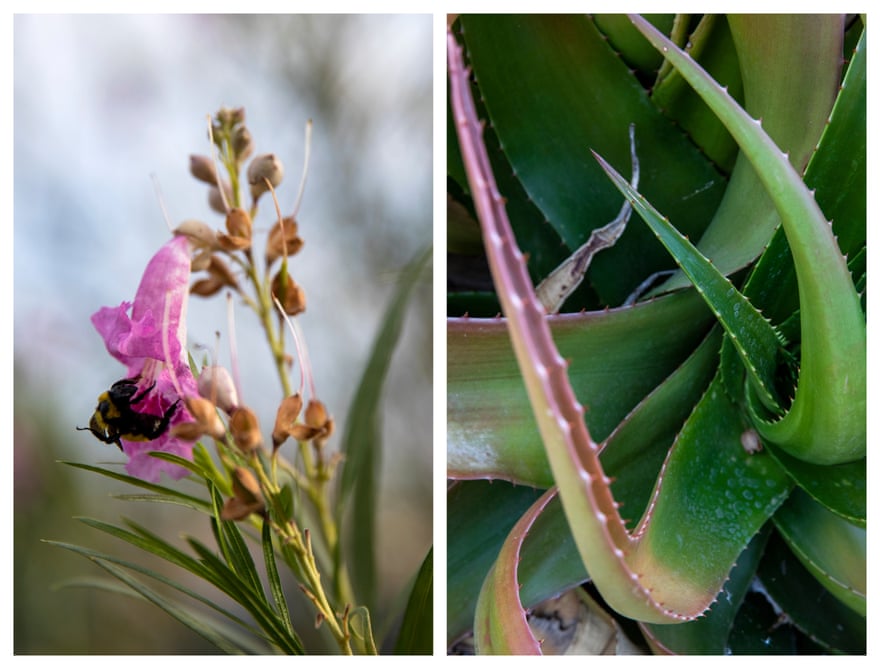
There are upsides to learning to live with a drier, browner landscape: residents who have made the switch say getting rid of their grass lawns has helped them save money on water bills, and also opened up new design possibilities, including making yards that serve as natural refuges for local birds, butterflies, and insects.
The trend has taken hold with homeowners across the economic spectrum, with a variety of options available to people with different budgets and visions. At the high end, luxury garden designers are installing hi-tech water conservation systems and working to turn sterile mansion lawns into thriving ecosystems of native trees, plants, insects, and animals. At the more budget-friendly end, city-sponsored programs are subsidizing the cost of removing grass lawns, and, for a handful of demonstration homes, even covering the full cost of turf removal and landscaping.

The potential impact of lawn removal is substantial. Outdoor watering makes up the bulk of residential water use in California, which means that getting rid of grass turf is one of the biggest individual water conservation measures individuals can take – far more impactful than trying to limit showers or toilet flushes.
“We believe that landscaping is the one thing that every property owner really could do to have an effect on climate change,” says Pamela Berstsler, the CEO of Green Gardens Group, which has taught drought-friendly gardening courses to tens of thousands of people across southern California.
Making lawn removal affordable for homeowners of all income levels is crucial, said Christopher Sellers, an environmental historian who wrote a book on the politics of suburban landscapes.
With drought-friendly gardens taking off, Sellers sees the old middle-class competition of “my lawn is better than your lawn” evolving into “my lawn is more ecologically friendly than your lawn”. Sellers worries this could open up new class divisions if native plant gardens become a symbol of affluence, making accessibility critical. “[It] could solidify those class lines, along green versus not green, climate aware versus not climate aware.”
The Guardian toured three Los Angeles yards and interviewed the homeowners about what it took to build more environmentally friendly landscapes at home.
When Reina Rodriguez, 54, and Mike Gratrix, 57, moved into their South LA home in 2018, there was a traditional grass lawn in the front yard.
“We noticed right away that the water bill was just horrendous,” Gratrix said.
But when they reduced the amount they watered the lawn, “it started to die”, Rodriguez said.
This past winter, through a free Los Angeles program, the couple removed their lawn and replaced it with a selection of California native plants, from sage bushes to desert willows.
LA’s water department offers residential customers rebates of up to $15,000 to replace their grass turf with “California-friendly” plants, as well as free online classes about yard transformation. Since 2009, more than 37m square feet, or 850 acres, of residential turf has been removed through the program, according to the department.
Rodriguez had been doing the research she needed to get the turf removal rebate when she heard about an even better option: Lawn Be Gone, a program that recruits homeowners across LA to turn their yards into low-water gardens at no cost, as long as they’re willing to serve as a model for the neighbors around them. Within days of applying, she and Gratrix were approved for a free yard transformation.
“There was nobody in this area that had this type of lawn,” Rodriguez said. “We were very excited.”
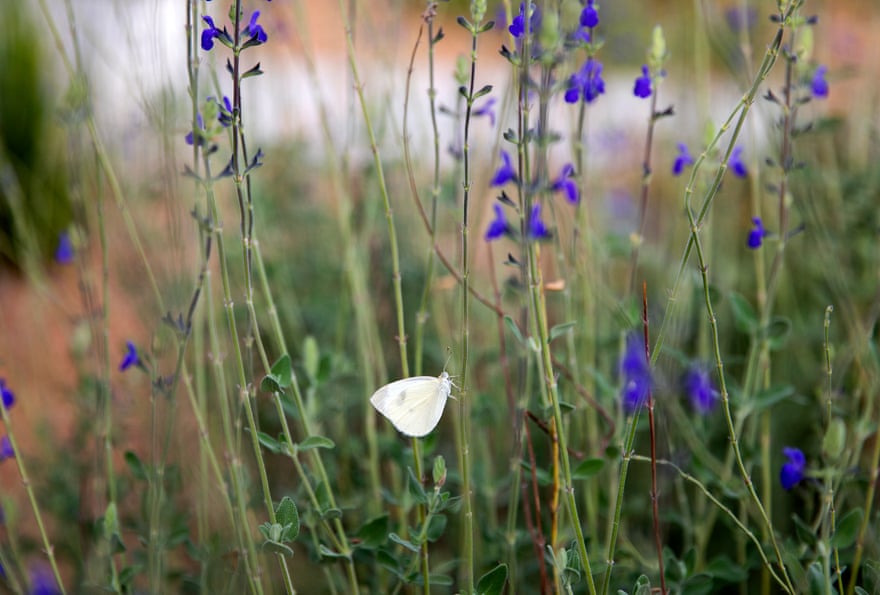
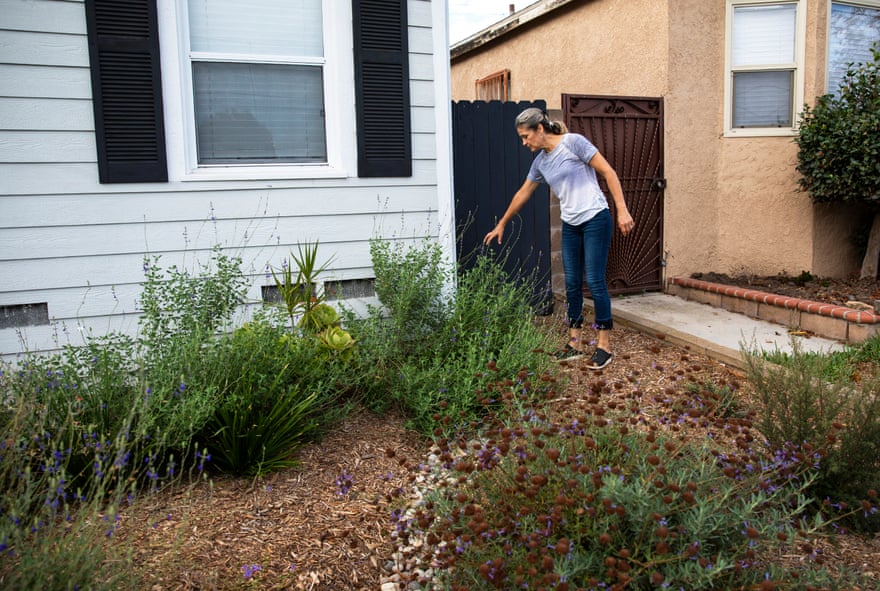
The redesign was a public, hands-on workshop, with neighbors invited to attend. While it took a while for their new plants to grow in, the couple said they love their yard’s evolution.
“I like the lavender-colored bushes,” Rodriguez said. “They attract a lot of butterflies and bees, which I don’t mind. [They have] a beautiful fragrance in the morning.”
So far, the couple said, they’ve had curious inquiries about their yard, but they can’t cite anyone who’s taken out their lawn as a direct result of their example. However, there’s evidence that funding turf removal can have ripple effects in surrounding homes. For every 100 homes that have removed turf with a rebate, 132 more have transitioned without a rebate, according to a study commissioned by the Metropolitan Water District of Southern California, which examined aerial photos of hundreds of homes and yards.
This spring, LA imposed new water restrictions as the drought worsened, but “for us, it means nothing”, Gatrix said, “because our plants are drought-tolerant plants, so they can withstand the heat, and they thrive in this type of environment”.
The Koreatown resident letting his plants go brown: ‘It shows their strength’
Georg Kochi, 69, began transforming his yard in the historic Koreatown neighborhood into a more drought-friendly landscape in 2014, during the last intense period of California’s continuing drought. It was originally a financial decision, he said, but, over the years, nurturing the native plants in his yard has turned into a profound aesthetic and spiritual practice.
He’s inspired by the beauty of “ruins”, and by the desire to create an artistic playground in his home.
In spring, the plants in his yard are green and verdant, but by summer, the harshest season, many of them are brown. Kochi embraces this: savoring the “dead red” of dried-out flower blossoms, and the beauty of skeletal palm fronds bleached by the sun.
“This is not its most depleted state, [but] when it shows its strength,” he says of his parched late-summer garden.
Kochi, who worked for years in arts management, including in Japan, has filled his front and back yards with California native plants, along with some legacy plants inherited from his parents. The sago palms in his yard are the “Rolls Royce of plants” in Japan, and like a Rolls Royce, “you park it in front”, he said. He likes mixing in plants with silvery green tones, like dwarf olives.

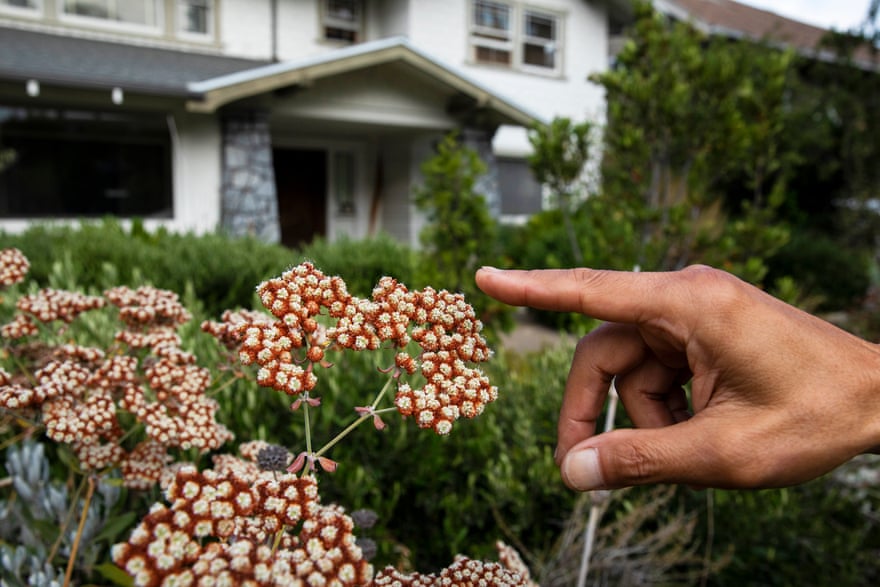
Kochi draws inspiration from the Japanese American sculptor Isamu Noguchi, the botanist and author Robin Wall Kimmerer, and from Native American friends who taught him about the sage, tobacco, sweetgrass and cedar now planted in his yard.
The house’s old backyard swimming pool is now filled in, the surface covered with gravel and planted with pines, reminiscent of Japanese zen gardens.
On a friend’s advice, he now waters his plants himself, rather than having an irrigation system. It’s a practice that takes time but lets him get to know the plants, seeing what they need and how they’re interacting with each other, he said.
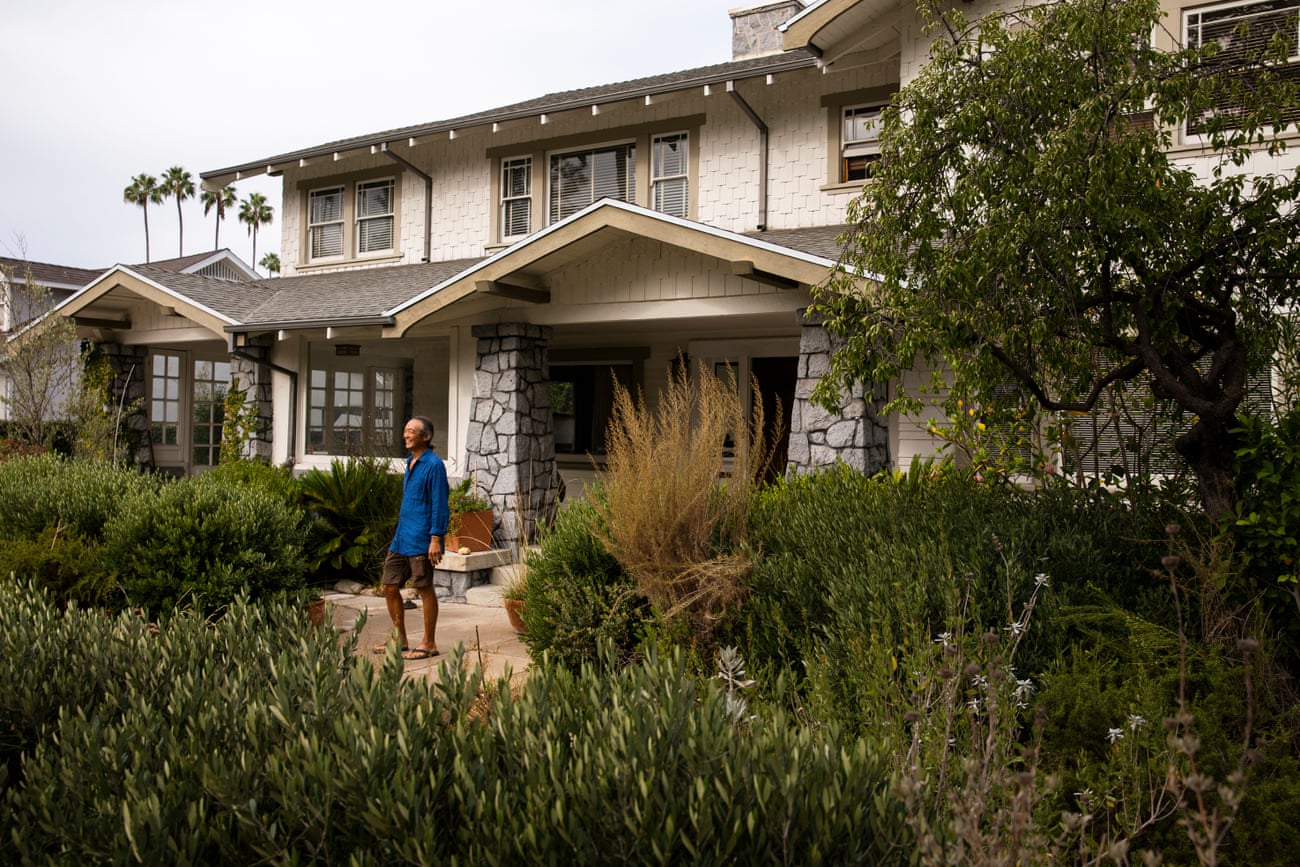
His meditative landscape has also delivered on the budget front: this spring, his water bill totaled just $30.07 for two months, he said.
The James Bond of drought-friendly mansions: ‘We control the water use from our phones’
In a gated community in Brentwood, a posh neighborhood favored by celebrities such as Gwyneth Paltrow, there’s a mansion that once belonged to the Hilton family. Its landscape once looked like a hotel: bright green grass, lots of tall palm trees.
Now, the Brentwood estate has been given a drought friendly and surprisingly high-tech makeover, with native shrubs, an ornate succulent garden, and giant tanks for holding rainwater buried under the lawn and hidden inside an ornamental garden cottage.
The landscape designers Marilee Kuhlmann and Tom Rau of Urban Water Group engineered this transformation, including building their own proprietary smartphone app that allows them to remotely monitor the garden’s water storage and irrigation. (The mansion’s owners, a couple in their 70s, asked not to be named in the article to protect their privacy.) “We can control everything from our phones,” Rau said.
During the 2017 Skirball wildfire, which forced the homeowners to evacuate the neighborhood, that remote water control system allowed Kuhlmann to turn on sprinklers to dampen the hill outside the mansion, as she sat at home watching the progress of the fire on television, she said.
The cisterns concealed in the landscape around the mansion hold tens of thousands of gallons of rainwater, which supplements government-provided water for irrigating the landscape, though it does not replace the additional water entirely.


There are some compromises involving more traditional garden features, including rose bushes, which do require more water than the most drought-friendly plants. (“Everyone needs a splurge,” Kuhlmann said.)
The landscape still includes some lawn around the house and by the pool, though the grass is now dune sedge, a species that uses much less water.
But there are also climate-forward choices, including the succulent garden built on a hill that’s especially vulnerable to wildfires: “The succulents are put in because they don’t burn,” Kuhlmann said.
Then there are the elements designed to revitalize the whole ecosystem around the house, such as coast live oak trees, whose root systems will improve the soil, and owl boxes, a raptor perch, and “water rocks” – stones with tiny pools of water in them for birds and insects to drink.
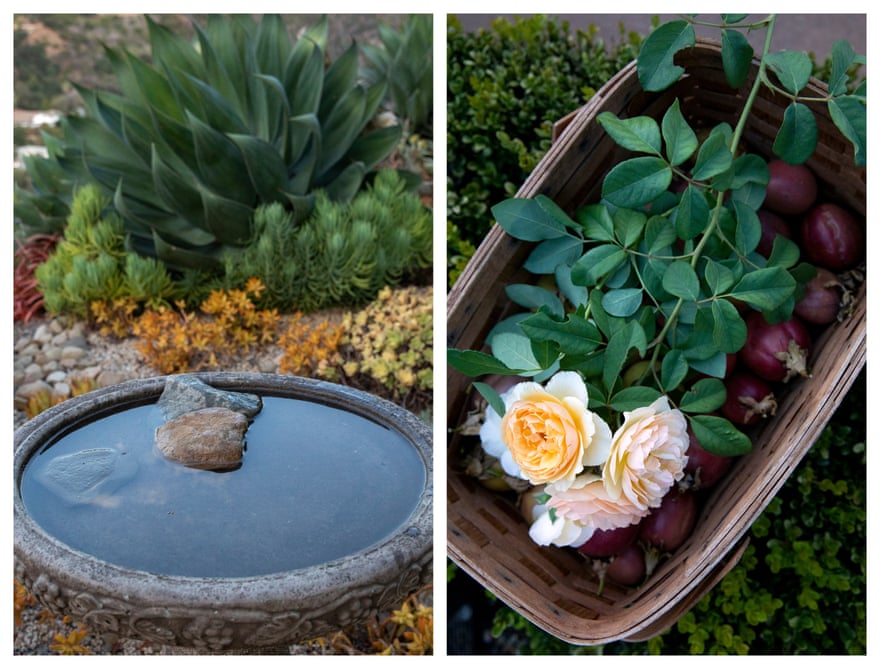
The previous landscape design, focused on grass turf and “very flammable palm trees”, had “no biodiversity”, Rau said. The redesign also reduced the property’s consumption of irrigation water from about a million gallons a year to about 300,000 gallons a year, depending on rainfall, he said.
Kuhlmann said the Brentwood house had been an important educational tool for demonstrating that a drought-resistant landscape design could be elegant, even glamorous. “People will see it and go, ‘Wow, it’s pretty,” she said.
At first, one of the homeowners said, some of the redesign ideas seemed extreme: “I didn’t know of anyone who put cisterns in their lawn or under the garden.” Now, they said, having that rainwater storage provides a feeling of security, and they’ve even looked into ways to make the water potable in an emergency.
Do they miss having a house surrounded by green turf? Not so much. “It was a lot of work,” one said. “There was always something going on with the lawn.”
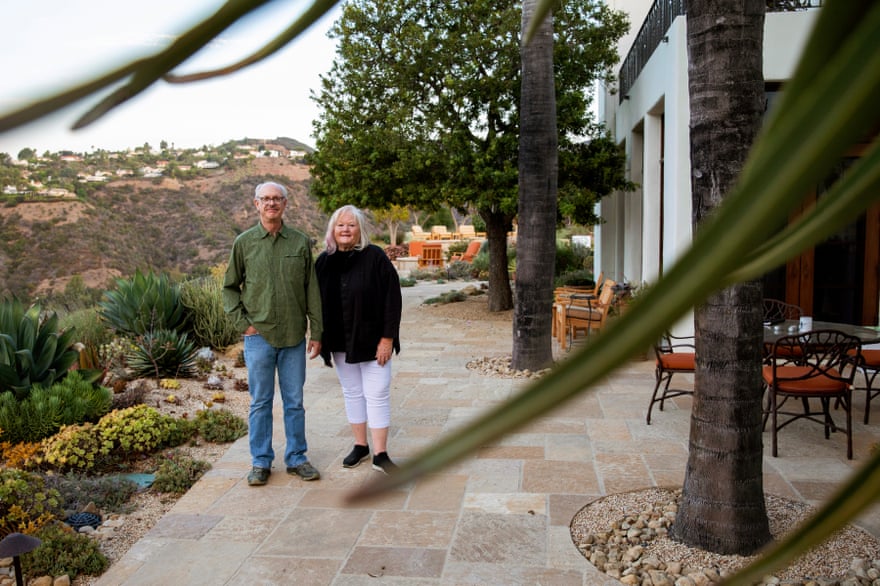
While the homeowners said they were not sure if they had yet inspired any of their friends to remove lawns at their properties, they said their drought-friendly landscaping had proved a hit when they hold events at their home: “It’s not the traditional English garden,” one said, but people like it.
“I get all kinds of compliments, and I say, ‘But it’s practical, too,’” the other said.
